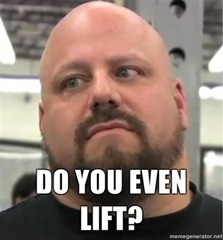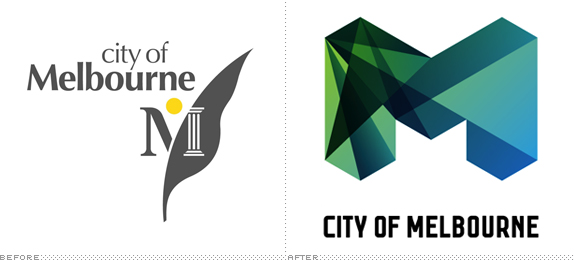Today is the much-hyped-in-the-media Click Frenzy sale. Here are my 0.4 cents [1] on this ‘event’.
Cart Before Horse?
Cyber Monday, which Click Frenzy is based on, was a term coined after US retailers noticed a spike in online shopping on the Monday after Thanksgiving. That is, this behaviour (the increase in online sales) existed before the term describing it (Cyber Monday) was coined. That term ended up reinforcing this behaviour, yes, but I think it’s important to remember that the behaviour came first.
The folks behind Click Frenzy, on the other hand, are trying to create a behaviour. They are trying to lightning rod a lot of October and November retail sales into a single day because, as consumer behaviour research tells us, people respond positively to time-limited offers (regardless of whether those offers are genuine or not) as well as sales (regardless of whether those sales are good or not).
Creating behaviours – particularly online behaviours of this kind – is difficult.
The organizers of Click Frenzy do have a few things going for them, though:
For starters, they’re using Cyber Monday as a reference so the whole single-day-online-sale concept isn’t something they have to explain to consumers in too much detail.
They have a lot of brands on board so, at the very least, they’ve got everyone’s attention.
They’ve also built a bit of hype around the event – which is crucial if you want to change behaviour. A lot of that hype is offline, though, and that is both good (they’ll have reached a larger audience) and potentially bad (a lot of that larger audience might not be the online shopping type).
They have a single point of entry for these sales which should, in theory, make it easier to find the deals you’re looking for. (Unless, of course, that single point of entry becomes a bottleneck.)
They also have a bunch of things going against them:
While being secretive about actual sale details works well for building excitement and curiosity, the fact is that we don’t know what deals will be on offer and how good they will be. Online shoppers are smart enough to shop around.
The way I understand it, most online shoppers in Australia buy stuff from overseas retailers because:
- equivalent items are much more expensive when bought from Australian stores (sometimes costing two or three times as much)
- there’s more variety in overseas stores
- the online shopping experience of many local retailers is poor (assuming an online store exists in the first place)
- the in-store shopping experience (including customer service) of many local stores is also poor
So, for Click Frenzy to be truly successful it will have to give Australian shoppers all of these benefits. That is:
- the prices will have to be good (and potentially better than Cyber Monday prices that customers can make the most of if, again, they buy from overseas)
- the variety of goods on sale will have to be considerable (and items will need to be in stock)
- the online experience will have to be exceptional
Do You Even Lift?
 Will Click Frenzy deliver on all those fronts? I have my doubts.
Will Click Frenzy deliver on all those fronts? I have my doubts.
Why? Because I don’t quite trust the Australian retail industry to get it right.
They’ve already demonstrated that they don’t understand ecommerce all that well (aside from a few possible exceptions). If they did, they might not have participated in Click Frenzy in the first place. (For more analysis on one aspect of this topic I recommend you read Michael Pascoe’s article in the Age called: ‘Myer, DJs’ online plans: tell ‘em they’re dreaming’).
I am also of the opinion that many Australian retailers simply aren’t all that good at marketing. They seem to be much more sales-oriented than marketing- or brand-oriented. That is, instead of deeply understanding and then tightly targeting their chosen customer groups, they tend to adopt a warehouse approach to selling stuff. That’s great if you’re selling in bulk (e.g. you’re Dan Murphy’s) but not so good otherwise.
My fear is that Click Frenzy is a bunch of retailers jumping on the ecommerce bandwagon without basing their decision on a proper, well-researched, well-thought-out, innovative (for them) approach to online selling. Because of this lack of understanding and lack of underlying strategy these retailers won’t have a suitable online offering during Click Frenzy and, as a result, they won’t see any benefit from participating in future Click Frenzies or, worse, ecommerce in general. I sincerely hope that’s not the case, but I have my doubts.
The other aspect of Click Frenzy that doesn’t bode well is that it seems, once again, these retailers’ strategies revolve around an increase in sales being the solution to their problems. Participating in Click Frenzy certainly won’t help them target their customers or build their brands. So while this might give them a short term boost in sales, it’s probably not a good long-term fix.
There is Hope
On the other hand, there is hope. If Click Frenzy does go well this might encourage retailers to finally hire the right people and lift their ecommerce game. We might finally get a good proportion of quality online stores with a decent ecommerce strategy behind them.
I’m not going to hold my breath, but I’m not all that jaded and pessimistic about the whole thing either. Here’s hoping.
Further Reading
Here are some other thoughts on Click Frenzy that are worth reading:
--
[1] 0.4 cents is 80% off from my usual 2 cents.






















